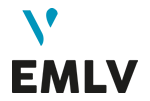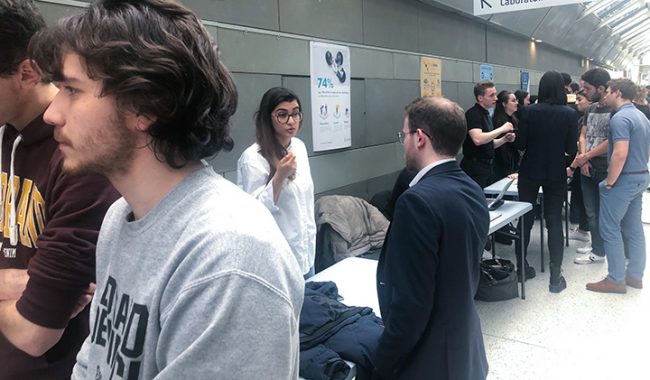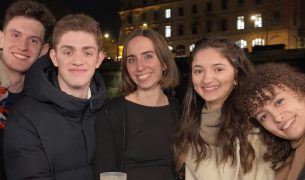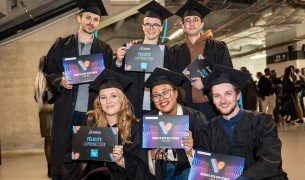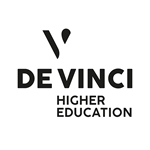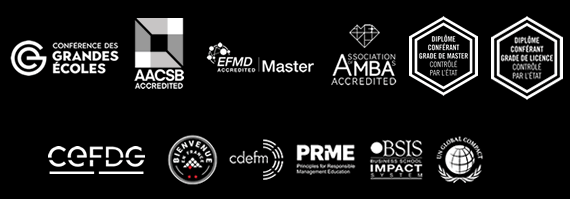More than 1,000 students formed 170 cross-curricular inter-school project teams to address the risks of digital hyperconnectivity and data hyper-transparency during a hackathon week at the Pole Leonard de Vinci. These were the ingredients that formed the recipe of the latest Soft Skills Pedagogical Week which took place from 17 – 21 February 2020 at the Pole Léonard de Vinci.
The hackathon, which took place under the theme “What alternatives are available to limit the risks of hyperconnectivity and data hyper transparency?” brought together 1,100 4th-year students from the three schools of the Pole Leonardo de Vinci: EMLV, ESILV, and IIM.
“During this week’s work experience, we’ve stressed on the scientific approach to entrepreneurship, encouraging students to validate their problems and solutions through external sources”. (Eric Konqui, entrepreneurship consultant, Soft Skills coach)
The significance of the ? button. A standardization project of online social influence rating systems
Six students from EMLV, ESILV and IIM proposed two solutions to limit the effects of social networks influence ratings on young people’s mental health: Antoine Teitgen (EMLV), Briac Mazoyer (ESILV), Corentin Jeunemaître (ESILV), Gabriel Maître (IIM), Ripanjot Singh (ESILV), Stéphane Richard (ESILV).
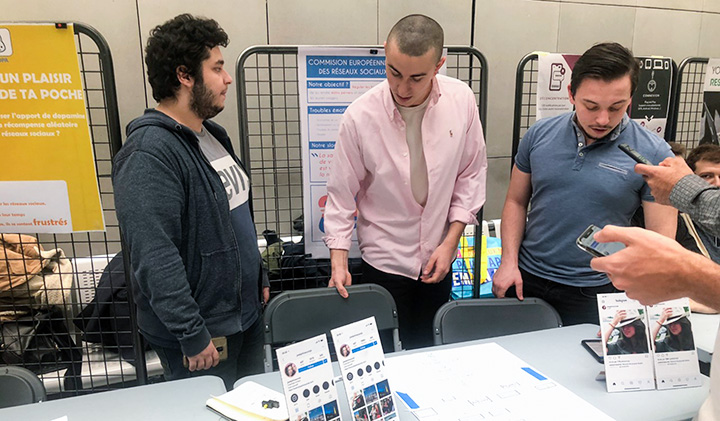
The inter-school project team worked on a proposal to standardize the social influence rating systems
“80% of young people use social networks. In addition, 50% of the young people have already experienced mental disorders; 40% of the girls have already been victims of harassment on the networks. How to respond to these problems? There are two solutions. “Standardizing” the social popularity metrics by limitting visibility of likes, subscriptions, retweets. Let’s say I have 120,000 subscribers on my Instagram account. If we “standardize” the metrics, we will only be able to see 1k + subscribers on my account. This change would “abolish” the popularity metrics system, which has a very negative impact consequences on the young people’s mental health. They would stop comparying themselves to others. Our second solution : enabling the authors of the posts to authorise comments on their Instagram publications. “(Gabriel Maître, IIM)
BeeShelter, a three-in-one support tool for cyberbullied teens
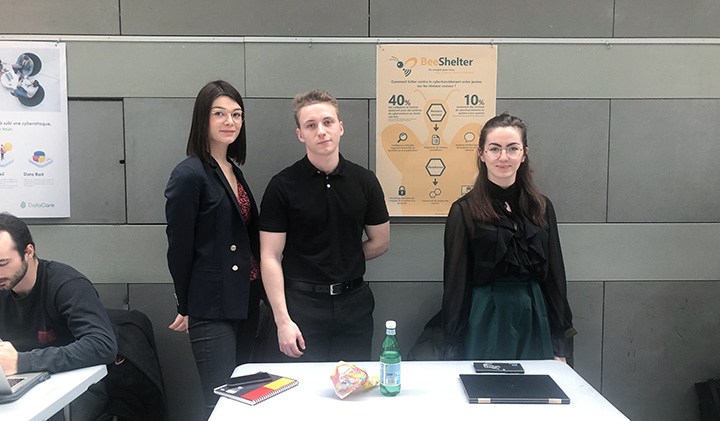
BeeShelter’s project team
Diane du Peloux (ESILV), Mathieu Simsek (ESILV), Marrie Vals (EMLV), Paul Meyer (IIM), Manon Billard (ESILV) and Maxime Dupêcher (IIM) worked on a three-in-one support platform project aimed at adolescents aged 11 – 16 years, who faced cyber-bullying on social media.
“We imagined a support platform, called BeeShelter, with 3 functionalities. First, we propose a social media account, which can be tagged on offensive, rude, and insulting social media publications, as a mean to report the cyber-bullying tentatives. This account will rely on artificial intelligence to analyse the content and push the victims toward a support chatbot. Secondly, we propose a web and mobile platform that can block all bullying accounts on social media. AI processes and records evidence to file complaints. Thirdly, we start a support group for cyberbullied teens. ” (Maxime Dupêcher, IIM)
Two new pedagogical approaches proposed during the Soft Skills Week
This year’s Soft Skills Week’s challenge proposed to the students was to refine their problems and find solutions through rigorous methods.
- The problem-solution’ approach provided in an iterative form, inspired by the Lean Canvas Business Model. Students adopted an adapted canvas model enriched with customized information.
- Problem-solution validation system based on opinions of human and social sciences experts
The topics covered 8 high-risk areas: education-training, psychology-relationships, privacy, health, social life, economy, security, politics-citizenship.
The aim of the Leonardo da Vinci Cluster’s transversal weeks is to bring students from the three schools, EMLV, ESILV, and IIM, to meet and study together, in order to decompartmentalize their approaches and open up their horizons.
To learn more about the transversal approach at EMLV, click here.









